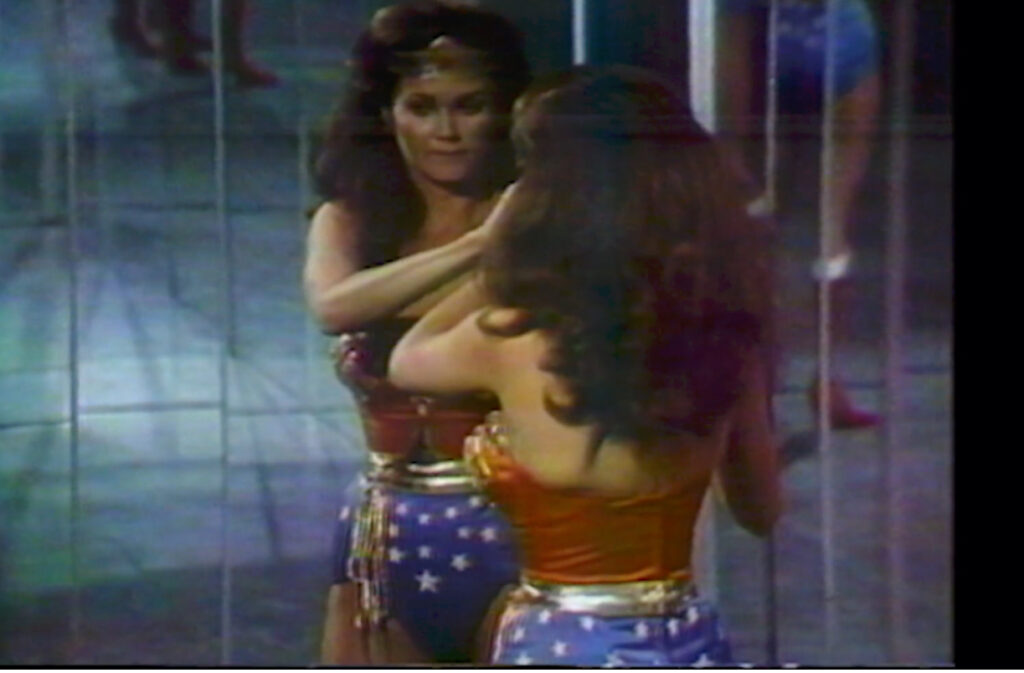Dara Birnbaum, who passed away on May 2 at the age of seventy-eight, leaves behind not simply a body of work but an arsenal—a battery of conceptual weapons forged from the raw materials of television and corporate visual culture. She was a pioneer in the truest sense: not just an originator of form, but a challenger of its ideological core. Her death marks the end of an era for video art, yet her influence remains as urgent as ever in an age when media saturation has evolved into algorithmic omnipresence.
Birnbaum’s name is synonymous with a particular kind of formal intervention—one that isn’t interested in making the viewer comfortable. She didn’t construct images from scratch. She repurposed, reframed, and rerouted existing ones. She understood what few did in the 1970s: that media was no longer simply a delivery system. It was a mythology machine. And she, with the precision of a surgeon and the defiance of a protester, cracked that machine open.
Her most well-known piece, Technology/Transformation: Wonder Woman (1978–79), still functions like a Molotov cocktail of feminist media critique. Comprised of rapid-fire edits and repeated sequences from the 1970s Wonder Woman television series starring Lynda Carter, the video collapses spectacle into spectacle, transforming a familiar icon into a fragmented battleground of performative femininity, capitalist fantasy, and desire. What emerges is not a critique of the show per se—but of the cultural framework that celebrates transformation as empowerment while simultaneously flattening the female subject into visual cliché.
Television as Weapon, Television as Wound
Birnbaum’s earliest work emerged in a media landscape utterly unprepared for her. Trained in architecture and painting, and having worked briefly as an architect for Marcel Breuer, she entered the art world not with the toolkit of a traditional visual artist but with the strategic eye of someone who had spent years learning how environments manipulate bodies.
She saw television not as a benign pastime, but as a built environment—designed spaces, loaded with ideological furniture. The living room, she understood, was already a stage. The TV, a proscenium arch for American mythology.
Her manipulation of televisual language—through jump cuts, looping, audio layering, and re-sequencing—predated and arguably prefigured the advent of remix culture, YouTube supercuts, and meme critique. Where artists like Nam June Paik saw television as a kind of electronic canvas, Birnbaum saw it as a site of struggle: aesthetic, political, and psychological.
In works like Pop-Pop Video: Kojak/Wang (1980), she dissected the gendered dynamics of advertising and procedural television. Here, Telly Savalas’ macho bravado is undercut by juxtaposed commercial imagery, exposing how masculine authority is manufactured and sold. PM Magazine (1982) applies similar tactics to suburban reality television, defamiliarizing the banality of its performance.
She did not aim for coherence. She aimed for rupture.
Wonder Woman: More Than a Loop
When Technology/Transformation: Wonder Woman was first exhibited in 1979, it wasn’t simply novel—it was explosive. In an art world still dominated by formalist painting and nascent conceptual gestures, Birnbaum’s use of mass culture was seen by some as dangerous proximity to the enemy. But that’s precisely where her brilliance lay: in infiltrating the site of ideological production and re-engineering it from within.
The work consists of short, repeated sequences—the transformation of Diana Prince into Wonder Woman, the explosion of light, the turn, the gaze. The looping is not merely aesthetic. It creates friction. It forces the viewer to confront the mechanics of illusion. As the transformation scene is repeated over and over, the empowering narrative that once seemed unquestionable begins to falter. The magic turn becomes a glitch. The fantasy collapses under its own repetition.
Birnbaum didn’t destroy Wonder Woman. She destabilized her. She took the celebratory optics of feminist representation—costume, strength, superhuman grace—and asked what they were covering up. In doing so, she forecasted debates that would continue into the 21st century around postfeminism, representation, and commodified empowerment.
Her decision to include slowed-down segments set to the music of the funk band Parliament only deepens the dissonance. The groove plays on, but the loop resists closure. Identity is no longer stable—it’s spinning.
Influence Beyond the Frame
Birnbaum’s legacy is far larger than a single artwork. She helped found Artists TV Network in 1976 and worked tirelessly to legitimize video as a critical art form, not a technical outlier. Her advocacy, both institutional and pedagogical, was instrumental in pushing museums and galleries to take video seriously—not just as a novelty, but as a vehicle of critique.
Her 2009 Artforum cover, paired with a conversation alongside digital-native artist Cory Arcangel, underscored the generational echoes of her approach. In that exchange, Birnbaum speaks not as a legacy artist but as an active interlocutor—someone still pushing, still looking for fault lines in the screen.
Many contemporary artists, whether directly citing her or not, are working through the trails she blazed: Hito Steyerl’s concept of the “poor image,” Martine Syms’ investigations into Black representational labor, Ryan Trecartin’s linguistic fragmentation, Sondra Perry’s digital skin manipulations. All find some spiritual lineage in Birnbaum’s initial rupture—the moment when the TV stopped being background noise and became battleground.
The Ethics of Piracy and Recontextualization
Birnbaum worked with pirated footage long before YouTube and remix culture normalized the gesture. In the 1970s, appropriating television material was not just a creative act—it was a legal risk, a political provocation. Her act of theft was not casual. It was deeply ethical. It was about who has the right to speak, and how.
She refused to seek permission from the networks whose footage she cannibalized. In her eyes, they were the ones who had colonized the cultural field. By taking their images, reworking them, and presenting them in an art context, she didn’t just critique mass media—she reclaimed its infrastructure.
In an interview, Birnbaum once noted that the camera was a weapon often used to turn women into spectacle. Her art was an effort to reverse the aim. Instead of pointing the camera back at the audience, she pointed it at the system.
A Practice of Tension, Not Resolution
Birnbaum’s video works are difficult to watch by design. There is no narrative arc. There is no closure. There is instead tension—between repetition and meaning, between desire and critique, between identification and rejection.
Her works are rarely more than five or six minutes long, yet they feel longer. Not in a laborious sense, but in a temporal one. She stretches the moment of visual pleasure until it breaks. She holds a mirror up not to reality, but to illusion—and then cracks it.
To call her work prescient is to understate it. Birnbaum anticipated the fatigue of continuous content before the term “content” even entered common usage. She understood that repetition was not merely aesthetic—it was ideological. If you can keep people entertained, you can keep them compliant. Her loops were not just technical—they were philosophical.
The Question of Legacy
What happens now, when video art has become as ubiquitous as it is commodified? When every phone is a camera, every meme a micro-edit, every image instantly replicable? Does Birnbaum’s work still resonate?
Absolutely. Perhaps more than ever.
In a world dominated by infinite scrolling, deepfakes, algorithmic targeting, and synthetic influencers, Birnbaum’s project takes on new urgency. She reminds us that the media landscape isn’t neutral. That every frame, every cut, every jingle has weight. She gives us the tools to see again. To parse. To resist.
Her refusal to make “entertainment” speaks volumes in an era when art is increasingly judged by virality. She never pandered. She never diluted. She was, above all, consistent in her commitment to disruption.
Impression
Dara Birnbaum’s death closes a chapter, but not the book. Her archive continues to be studied, exhibited, and reinterpreted across media and generations. Her interventions have become foundations. Her defiance, a kind of blueprint.
What she taught us is simple, and eternal: the image is never innocent. Television was her battleground, but her war was against passivity itself. And that battle—fought not with spectacle, but with splicing, not with fantasy, but with friction—is still unfolding.
As long as screens remain, so will her echo.
A loop without end.
No comments yet.








